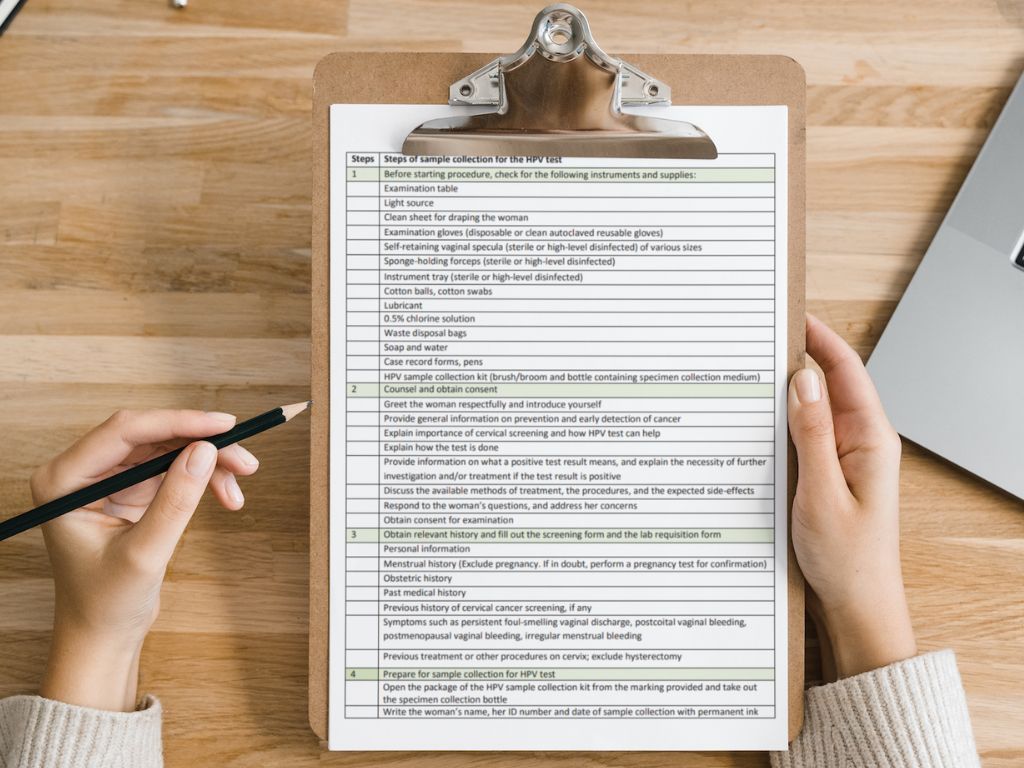Using Human Papillomavirus (HPV) detection tests for cervical cancer screening and managing HPV-positive women – a practical guide / Activity 5
Procedure to collect samples for HPV testing – Sample collected by a health provider | Click on the pictures to magnify and display the legends |
WHO recommends cervical cancer screening using HPV testing for women in the general population from the age of 30 years. Women living with HIV should start screening at an earlier age of 25 years. The upper age limit (i.e. the age at which to stop screening) varies and depends on the availability of resources. In limited-resource settings, cervical cancer screening may stop at the age of 49 years for women with a history of negative HPV test results. In higher-resource settings, cervical cancer screening is usually continued until the age of 64 years or even beyond. The frequency of screening with HPV testing also depends on the resources available to the programme. Where adequate resources are available, women in the general population should be screened with HPV testing every 5 years and women living with HIV every 3 years. In low-resource settings, the interval may be extended to 10 years for women in the general population and 5 years for women living with HIV.
HPV testing can be used to follow up women after treatment for cervical precancer. Samples from the cervix for HPV testing can be collected by a trained health provider (auxiliary nurse midwife, nurse, or clinician). The next sections describe the steps for collection of samples by a health provider. Click here to download the step-by-step checklist for specimen collection for HPV testing, which serves as a reminder in the clinic. The checklist is also useful during a training programme, to assess the trainee’s skill. The next section describes counselling before screening.
|
